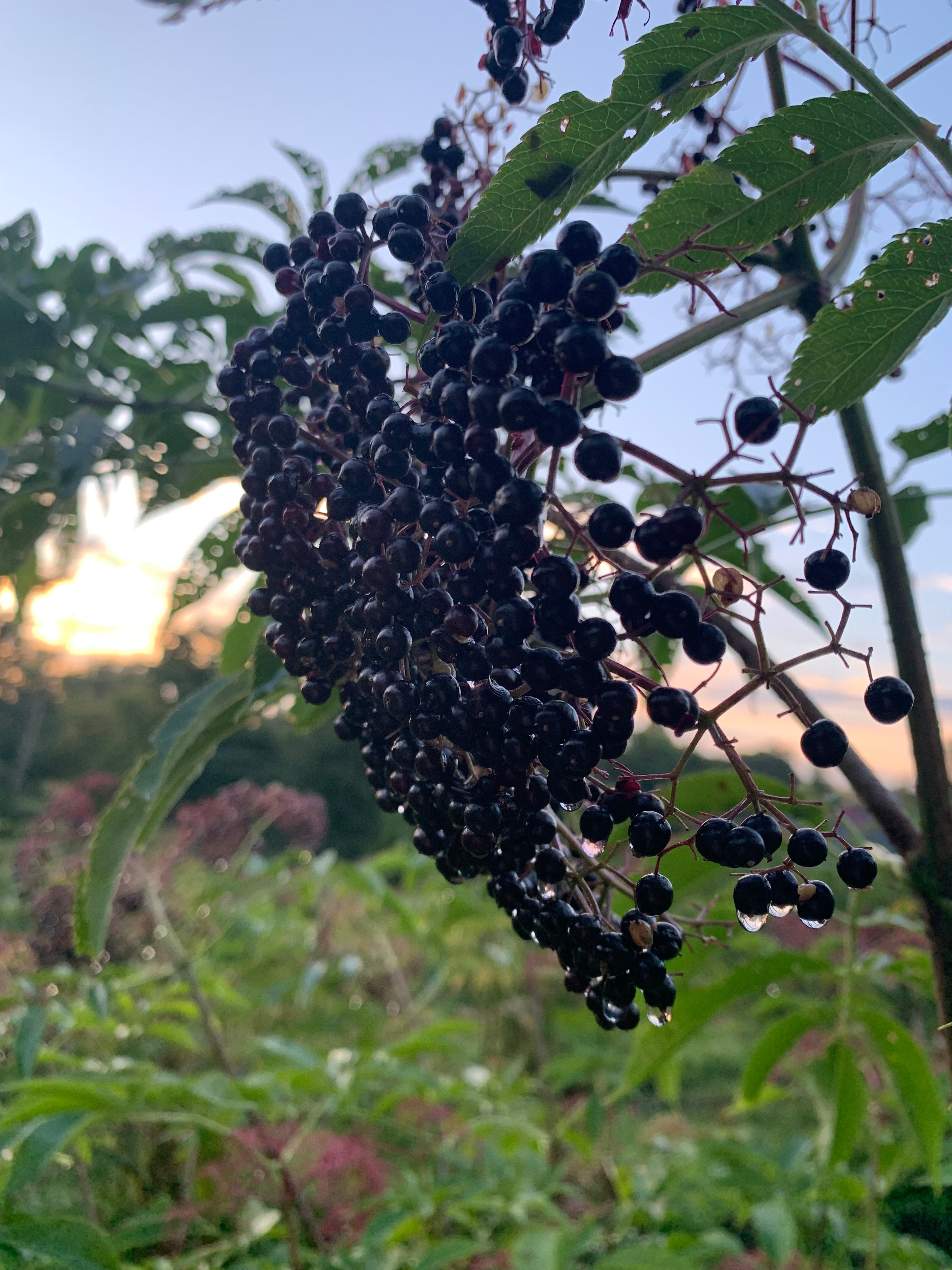
The bushes first send out flowers in May and June. The photo above shows the white clusters of flowers. Each of these small white flowers produce one berry. Elderflowers are prized in Europe because of their intense aroma, but our North American elder varieties are bred for berry production -- our flowers are nice but not like the European flowers.

It's late summer and the elderberry bushes are ready to harvest. Here's Dave (above) being careful not to harvest a too-young cluster. A lot of "too-young" berries will produce a redder juice (rather than purple-blue) and an even tangier flavor. Waiting for the darkest berries possible means a better juice.

Elderberry bushes prefer consistent moisture and a well-drained soil. 2024 brought us lots of rain. We also left the bushes a bit higher when we pruned them last winter. Some of our bushes were 14 feet tall by the time we harvested. While this keeps the deer from eating them, it means bending the canes carefully to snip off the berry clusters at the tops of these tall bushes.

These clusters are ready to be de-stemmed. For home use or a small orchard, a simple fork does a great job of separating the berries from the stems! We have a machine called TED (The Elderberry Destemmer) made by Terry Durham of River Hills Harvest.

Pictured above is our bladder-press style juicer where the berries are pressed into juice. The berries' final destination is in your bottle of Elderberry Apple Shots, Elderberry Juice, or coming soon -- our organic American Farm Soda. And after these berries make their contributions, we clean the seeds and make Elderberry Seed Oil which goes into our fabulous, rich, elderflower soaps.


Excellent local elderberry juice! Best I’ve had!!